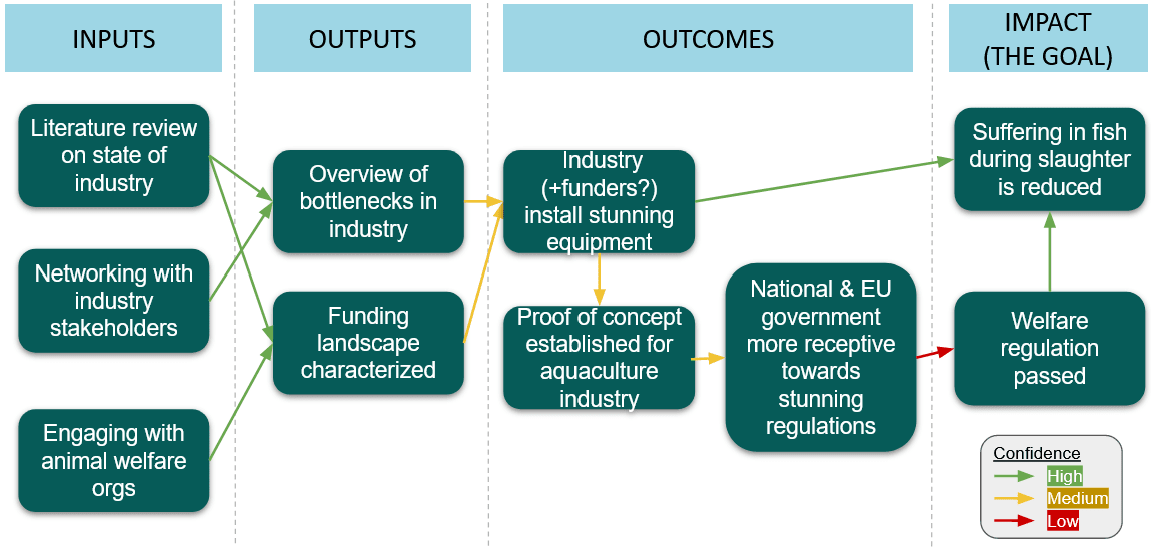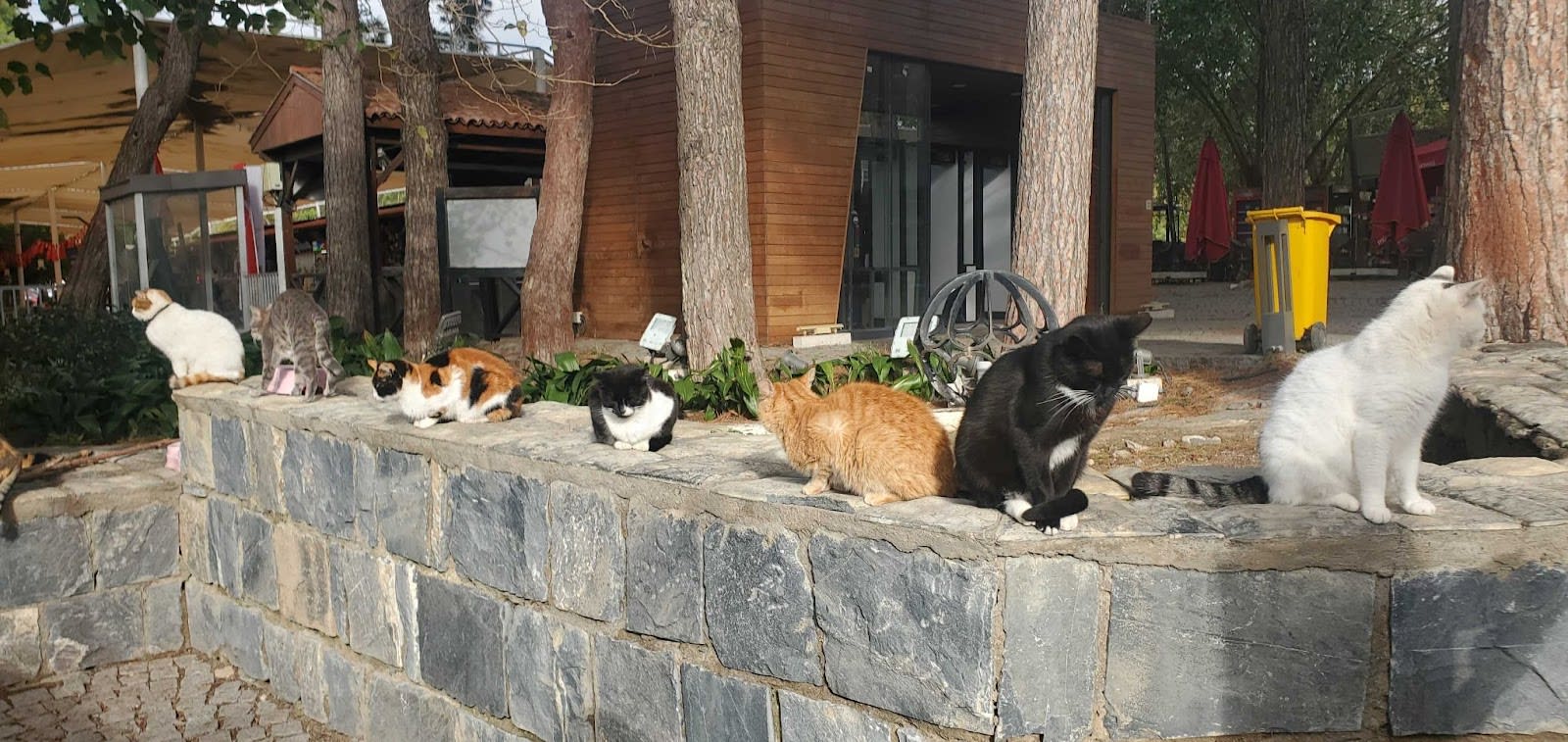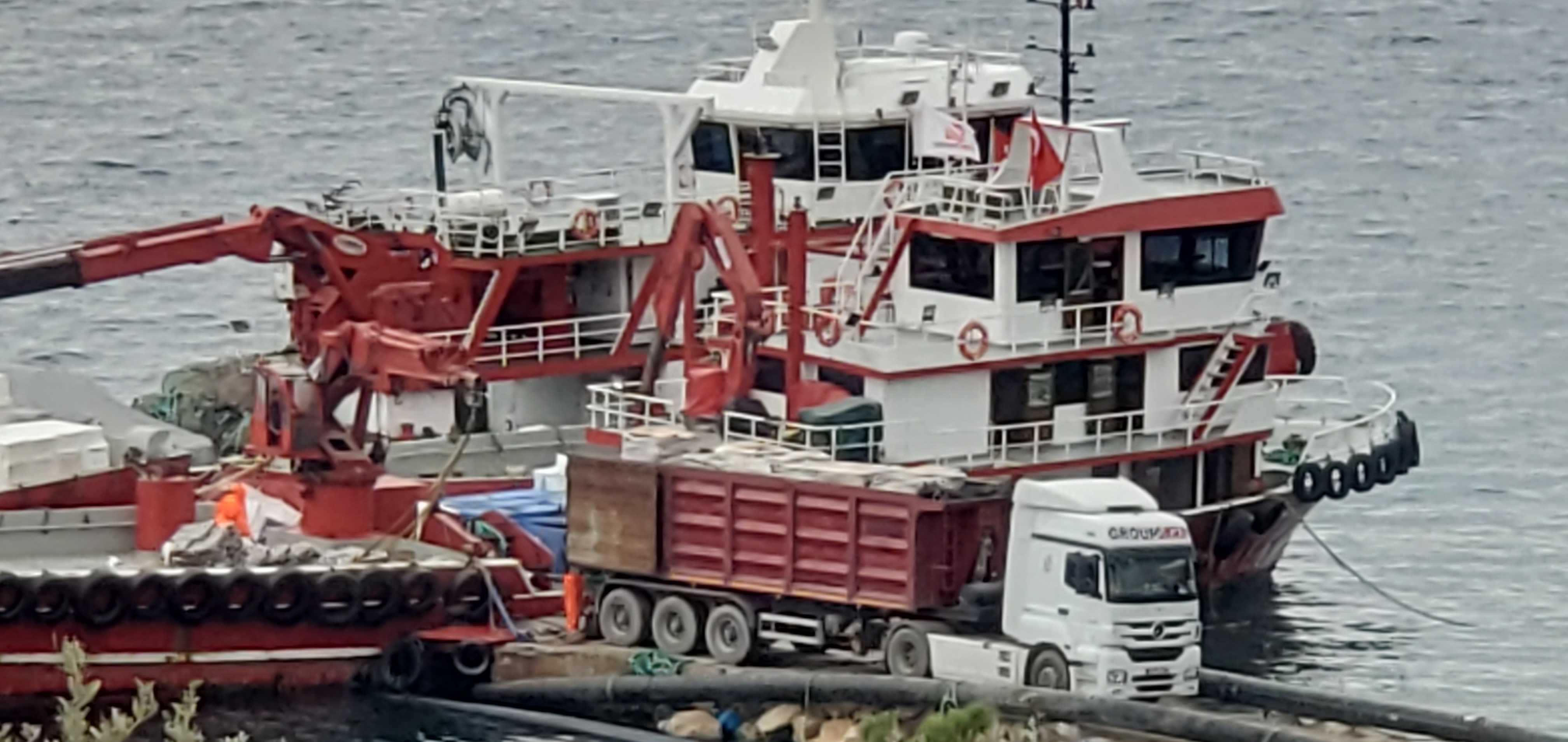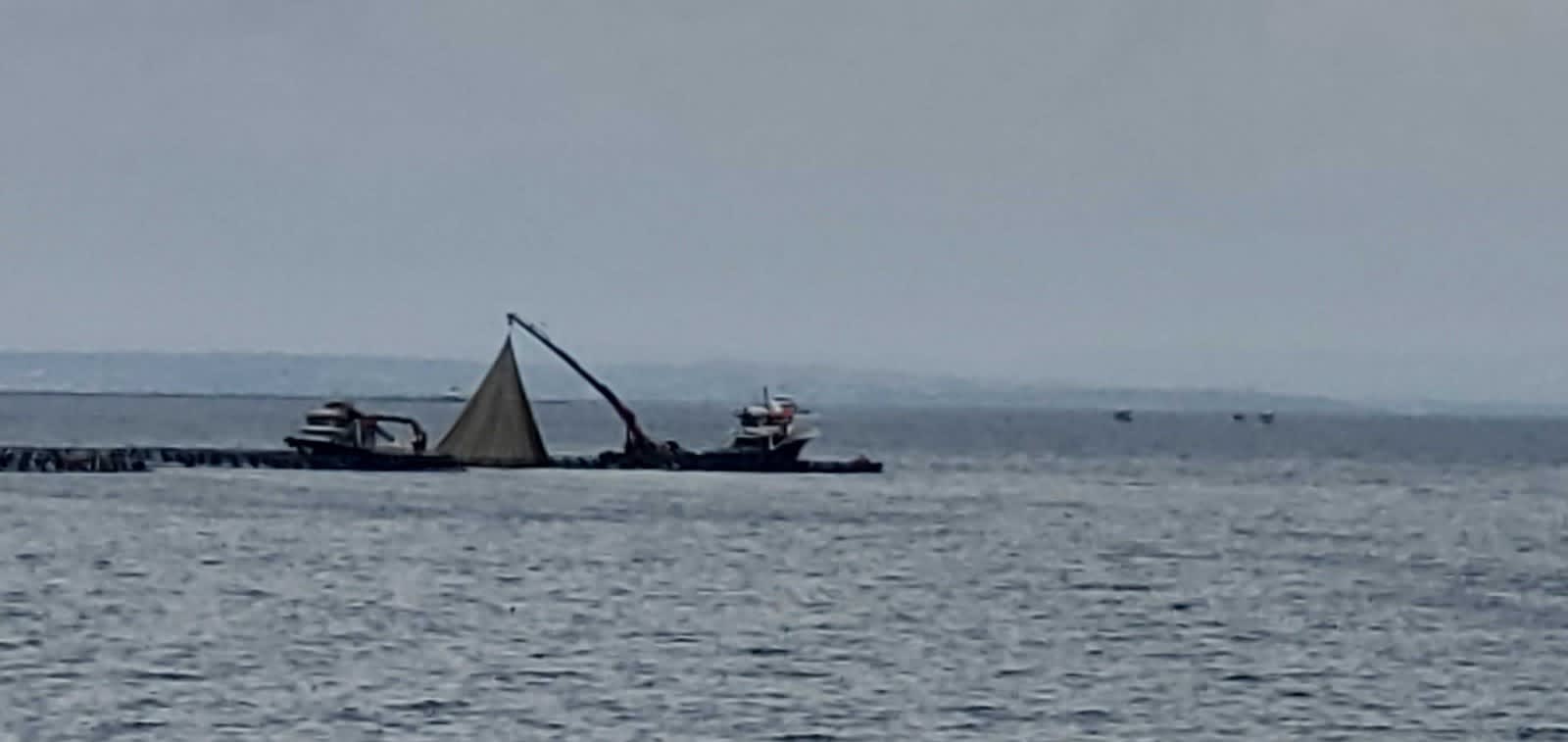This post shares our journey in starting an Effective Altruism (EA) charity/project focused on Mediterranean fish welfare, the challenges we faced, our key learnings, and the reasons behind our decision to conclude the project. Actual research results are published in a Literature review and article.
Key points
The key points of this post are summarized as follows:
- We launched a project with the goal of enhancing fish welfare in Mediterranean aquaculture.
- We chose to limit our project to gathering information and decided against continuing our advocacy efforts after our initial six months.
- Our strategy, which focused on farmer-friendly outreach, was not effective in engaging farmers.
- The rationale behind our decision is the recognition that existing organizations are already performing excellent work, and we believe that funders should support these established organizations instead of starting a new one.
- The support and resources from the Effective Altruism (EA) and animal welfare communities were outstanding.
- Despite the project not achieving its intended outcomes, we view the overall experience positively. It's common for new charities to not succeed; the key is to quickly determine the viability of your idea, which we believe we have accomplished.
Note: Ren has recently begun working as a guest fund manager for the EA Funds Animal Welfare Fund. The views that we express in this article are our views, and we are not speaking for the fund.
Personal/Project background
Before delving into our project we’ll provide a quick background of our profiles and how we got to starting this project.
Koen
During my Masters in Maritime/Offshore engineering (building floating things) I got interested in animal welfare. Due to engagement with my EA university group (EA Delft) and by attending EAG(x)Rotterdam I became interested and motivated to use my career to work on animal welfare. I hoped to apply my maritime engineering background in a meaningful way, which led me to consider aquatic animal welfare. I attended EAGLondon in 2023 with the goal of finding career opportunities and surprisingly this worked! I talked to many with backgrounds in animal welfare (AW) and engineering and in one of my 1on1’s I met someone who would later connect me with Ren.
Ren
As a researcher, Ren has been working at Animal Ask for the past couple of years conducting research to support the animal advocacy movement. However, Ren still feels really sad about the scale of suffering endured by animals, and this was the motivation to launch a side project.
Why work on Mediterranean fish welfare?
This project originated out of a desire to work on alleviating extreme-suffering. More background on the arguments to focus on extreme-suffering is discussed in Ren’s earlier forum post. When the welfare of nonhuman animals is not taken into account during slaughter, extreme-suffering is likely to occur. Also, from Ren's existing work at Animal Ask, they knew that stunning before slaughter is often quite well-understood and tractable.
Therefore, Ren produced a systematic spreadsheet of every farmed animal industry in developed countries (i.e., those countries where Ren felt safe and comfortable working). This spreadsheet included information on a) the number of animals killed, and b) whether those animals were already being stunned before slaughter. Three industries emerged as sources of large-scale, intense suffering:
1. Farmed shrimp in the United States,
2. Farmed shrimp in Australia, and
3. Sea bass and sea bream in the Mediterranean.
Ren actually looked at farmed shrimp initially, and work on these projects may continue in the future, but there are some technical reasons why work on these projects needs to wait for a year or so. Therefore, Ren decided to pursue the project on sea bass and sea bream farmed in the Mediterranean.
Annually an estimated 51-167 billion farmed fish are slaughtered after a life in confinement. Slaughter methods often do not take fish wellbeing into account at all. In Europe, 419 million Sea Bass and Sea Bream are slaughtered each year. Currently, almost all Sea Bass and Sea Bream are killed by live chilling (immersion in ice/ice slurry slurry), followed by gill cutting. With this slaughter method the Sea Bass and Sea Bream can remain conscious for between 5 and 40 minutes. During this period, the fish show signs of immense suffering, including vigorous attempts to escape.
Equipment exists that stun fish so that they will no longer have to endure this extreme suffering. Companies have developed electrical stunning systems (ESS) that either electrify the fish out of water or when still submerged. Supporting or pushing the industry to implement these techniques could be tractable for the following reasons:
- Improved quality of flesh: Research is indicating that properly stunned fish endure less stress at the end of their life. In the current situation the fishes struggle for life leads to acid build up in muscle tissue, potentially leading to a worse flesh quality and shorter shelf life for the final product.
- Ease of operation: When installing a combination of a fish pump and stunning device operations can lead to easier handling of fish.
- Funding: It can be possible to apply for funding from existing European Union funds aimed at working on animal health and welfare in aquaculture.
Another reason for pursuing this intervention was that working on farmed fish in the Mediterranean could make influential countries more supportive of welfare reform during upcoming fish welfare negotiations at the EU. At the start of our project it was expected that new animal welfare regulations were going to be announced, as promised by the EU after the “end the cage age” initiative. If the most influential countries in the EU each had a proof of concept installed on one of their farms this could make them more receptive to stunning regulations for farmed fish.
Based on our initial research, which consisted of meeting with one animal welfare group in the Mediterranean we also concluded that the work on this topic was limited.
Some related fun fish facts:
- Some Sea Bream change sex, male to female, at 2-3 years old. They can also have offspring with other types of fish, a type of hybridization. source
- Electric eels and other electric fish actually stun their prey before eating them—how nice of them! Also, 'Electrophorus electricus' is a pretty cool name, if you ask me.
Project plans and initial work
Before we obtained our funding we started drafting a project plan and theory of change. Our initial project plans were focused on obtaining proof of concepts for ESS in three influential countries. Our reasoning for this was that having a company operating in your country using ESS would allow for a better discussion around the topic and could create more support for adopting new regulations. Having received funds for our “minimal funding” scenario (more on this later) we changed our plans to only focusing on the initial steps of our theory of change; obtaining information by networking and studying available literature. If after six months an internal evaluation showed that our theory of change was still valid we would continue our work by and apply for additional funding.
We identified two crucial considerations that are essential to achieving our impact and that could later on help us evaluate if we should be continuing our work:
- Blending into the industry; A large part of our impact will be achieved through obtaining connections that are willing to work with us and provide us with information that is not accessible by literature reviews. The strategy for this was to frame ourselves as an industry friendly group that is mostly focused on helping farmers achieve a better product through the use of electrical stunning. If we are unable to obtain these contacts gathering information and advocacy is going to be difficult.
- Added value of starting a new organization; Given that there are existing efforts addressing this subject, a critical assessment of the added value our organization brings is crucial. Should our evaluations during the project reveal that our strategies are less effective than anticipated, or that other established groups are better positioned to achieve the desired outcomes, we should consider ceasing our operations.

Obtaining funding
After deciding to advance with the project we drafted a funding application. We based our funding request on a minimum, comfortable and maximum scenario that would cover our travel expenses and a salary based on 0.5 FTE. End of July 2023 we submitted our request to the EA Animal Welfare Fund. We proposed three funding scenarios in our application:
- Minimal Funding: $30,000 USD, covering the bare essentials to initiate our project.
- Comfortable Funding: $50,000 USD, allowing for a more flexible and effective project execution.
- Maximal Funding: $150,000 USD, funding for a full three years of research and advocacy.
The budget breakdown was as follows:
- Salary for Ren (0.5 FTE) - 30%
- Salary for Koen (0.5 FTE) - 40%
- Travel - 15%
- Admin/Legal - 5%
- Buffer - 10%
Communication with the fund informed us that our “proof of concept” plan might not be as useful as hoped. Discussion with the fund led us to focus more on gathering available information and perspectives. For this we obtained funding to cover half a year of expenses + salary totaling $18,000 USD. The limited amount of funding led to Ren giving up their share of the salary, as they had a steady income at Animal Ask. We obtained our funding confirmation early September allowing us to officially start our work. Our experiences with applying for funding were very positive. Communication went smoothly and they were willing to discuss our plans and fine tune them to be more impactful. Due to our traveling expenses being less than expected we plan to return a share of the money to the EA animal welfare fund.
Initial work
Once our goals and strategy were devised we started our first work which consisted of talking to animal welfare organizations in the Mediterranean, manufacturers of stunning equipment and others with relevant information/expertise. During this stage we also combined available literature into a review. The initial two columns of the theory of change were expanded into the following questions:
- How likely is the industry to implement stunning themselves?
- How would offering the industry more help (money + technical expertise) change things?
- What views do fish farmers have on stunning equipment?
- How much would it cost to implement stunners?
- What funding is available for purchasing stunners from outside of the animal advocacy movement?
Our main methods for answering these questions were conducting desk research and interviewing/visiting relevant stakeholders. The first actual work consisted of setting up online meetings with all organizations relevant to electrical stunning in Mediterranean aquaculture, including the AW orgs from Greece (Hellanic Animal Welfare Federation), Spain (Animal Welfare Observatory), Italy (Esseri Animali), France (Welfarm) and Türkiye (Future for Fish) and manufacturers of stunning equipment. Setting up meetings took up a larger share of our work than expected. We started out by meeting the already established animal welfare organizations. These meetings were incredibly valuable and provided information that we would later use to plan our farmer outreach.
During the first stages of information gathering we observed that a surprisingly high amount of work to support stunning before slaughter of Sea Bass and Sea Bream in the Mediterranean was being done. At the start of the project we were aware of one company that was using ESS onboard a vessel and that work from animal welfare groups on this topic was very limited. During our meetings with the AW organizations we learned of more examples and of efforts focused on promoting ESS. Most surprising was that in November a Turkish organization, Future for Fish, was hosting a conference on ESS in Mediterranean aquaculture. Meetings with the manufacturers also indicated great efforts to promote their equipment to farmers. Recently a Spanish farming group even announced that they are tendering a project to develop a new stunning device that is to be used for Sea Bass and Sea Bream.
There was also lots of information available in the scholarly literature. For example, we found several papers that had reviewed the physical characteristics of fish farms in the Mediterranean (e.g. distance from coast), which helped to answer some of our research questions.
Farmer outreach
A large part of our research was planned to consist of interviews with fish farmers from multiple countries. AW groups informed us that animal focused outreach did not prove effective when reaching out to farmers. This led us to adopt a farmer friendly framing. As a new, unknown group we had the possibility to create a new entity that could be more appealing to farmers. With the help of Vegan Hacktivists and Vegan Linguists we created a website that would make us look farmer friendly under the name Piscivita[1]. We reached out to around 60 fish farmers in Greece, Italy and Türkiye. The first round of emails we sent out to farmers used the following framing:
“I am a researcher for Piscivita, an organization aimed at providing advice and support for fish farmers. We are currently researching how electrical stunning equipment could benefit fish producers. We plan to develop recommendations that we will provide to policymakers and other stakeholders at the national and European level. We want to ensure that farmers' needs are taken into account and that is why we could use your help.”
After this we asked whether it would be possible to visit their farm to try to understand their operations and what problems they might face when deciding to introduce ESS into their operations. Emails were translated to the recipient's language.
This approach did not work. From our ~60 emails we only received one reply stating that their facilities were currently being upgraded and would not have time to let us visit. A different group advised us to try to get in through an introduction from a contact the farmer already knows. We were able to obtain some contact information through a stunning manufacturer we were in contact with. However, this also did not prove to be successful.
After our first failed attempt we tried again. This time we told the farmers that we were a consultancy agency focused on the economic benefits of ESS, such as increased shelf life and easier operations. Our new outreach was focused on the types of services that we could offer to fish farmers, such as;
- Identifying the right equipment for their specific needs: evaluating the size of their farm and processing practices to recommend the most ESS for their operation.
- Simplifying the procurement process: connecting farmers with reliable manufacturers and negotiate favorable price lists to ensure they receive the best value for your investment.
- Providing help with installation and training of staff: ensuring the smooth integration of the equipment into your farm operations, providing expert guidance and training for your staff.
- Exploring financing options: assisting in securing financing to support the acquisition of electric shock equipment. We told them we could collaborate with various organizations that provide financial support to aquaculture businesses that can help them navigate through the application process.
This also did not work. We did not receive any replies. Our main hypothesis for why this did not work is that an email with this framing ends up being one of the many sales-type emails that a company receives. There might be other ways in which this does work, we are definitely no experts in marketing, but if anyone else tries this it might be worth it to hire an expert in marketing or copy writing.
We also learned that other organizations also had a hard time getting in contact with fish farmers. One group that was successful managed to get in contact with multiple farmers by working together with an academic advisor. A different method to come in contact with farmers could be trying to get into working groups with academics and industry representatives, this was not tried for this project.
To still try and obtain relevant information we planned a trip to Türkiye that would start with the ESS conference hosted by Future for Fish in Izmir. Since Ren lives in Australia we decided that it would be easier if Max, a colleague of Ren from Animal Ask, would join the trip. At this conference we hoped to talk to fish farmers to arrange visits on their farms. The conference itself was very impressive; government officials, academics, industry and NGOs were present and discussed how ESS could be beneficial for aquaculture and fish welfare. When we started our project we did not expect that such a conference, with a focus on fish welfare, would be possible. Speaking to farmers during the conference proved difficult due to the language barrier and difficulty finding interpreters. After the conference we stayed in the Izmir region and kept trying to reach out to farmers.
We also made sure to enjoy our trip and tried some Turkish coffee and petted some of the stray cats. One of these cats gave me fleas so I will no longer engage in petting stray cats (perhaps a more effective strategy is to love them from a distance!).


We also did two trips aimed at obtaining visual data from fish farms. We were able to approach many on-shore production facilities, but upon arrival, we were unable to get any closer. Most farms seemed to have strict check-in gates to enter the premises. We did however get an ok view of the onshore facilities and managed to get some good views of the construction of offshore net cages and the ships used in the harvesting process. Despite not obtaining much new information it was valuable to actually see everything happening in person. It also allowed us to obtain some copyright free pictures/video. Due to the actual net cages being far from shore and in obscure locations it was difficult to get a good view of, only the ones near coastal roads were accessible. Good binoculars or a drone would have helped us get a better view of the farms and ships that were operating in the field.


Returning from Türkiye we continued working on our research. We kept trying to reach out to farmers and we managed to get some of our questions answered through the help of an EA contact we met in Türkiye. Also, we realized that some of our questions could be answered using publicly available aerial imagery and spatial data. This was a perk of Ren being a data nerd. There is lots of spatial (GIS) data available on the internet with a little bit of digging, such as the coordinates of many farms; aerial imagery of the entire coastline of Spain, Greece, and Italy; and so on. This was imperfect, but it enabled us to collect some data on the physical characteristics of farms (e.g. size, number of pens, distance from coast, wave energy).
Wrapping up the project
Having a better overview of the industry and the work being conducted by various groups we decided to not apply for further funding. Our main reasons for this are:
- More work is being done in the area than we initially expected. In Türkiye, Italy and Spain groups are actively working on aquaculture. Greece has no groups focused on improving fish welfare however, Charity Entrepreneurship is possibly starting a charity focused on advocating for fish welfare improvements Greece. We do emphasize that this was a risk that we were aware of from the beginning, and one focus of our pilot project was making an informed decision about this crucial consideration.
- Our farmer friendly approach did not work as expected. We assumed that being able to approach farmers with a message that was not focused around animal welfare could give us an advantage compared to already established animal welfare groups.
- Our original big plans were based on influencing policy in the European Union. When the EU dropped/delayed their animal welfare plans the expected impact of our plan to do more outreach decreased.
Based on the earlier mentioned crucial considerations we decided that the impact of continuing work according to the original plan would not be as valuable as funding already existing groups or trying out new strategies.
We decided that we would try to publish our findings as a research article. A recent post by Ren goes more into the considerations around this. Along with this we also wrote a funding recommendation that we will provide to the animal welfare fund with an overview of possible new interventions and existing organizations that are working towards stunning in Mediterranean Aquaculture.
Other takeaways from starting a project
- Working alongside Ren, who has experience in the EA and AW communities, proved to be immensely beneficial for me, Koen, in various aspects. Collaborating with someone who is already established and recognized in these fields significantly boosted my entry into a career related to EA. Ren's credentials were not only helpful in securing funding and other non-technical aspects of starting a project, but they also facilitated valuable networking opportunities. Without this partnership, I doubt I would have had the confidence to independently initiate a project, especially one aimed at securing funds for a cause area with limited resources. Additionally, dealing with cases involving extreme suffering was often challenging. Adapting to this aspect of the work was made easier by having someone to discuss this with, and Ren's willingness to share their insights and experiences was incredibly supportive.
- We were surprised by the amount of resources and help available. As mentioned we were helped by the Vegan Hacktivists and Vegan Linguists for our website, all other interactions with people form the AW or EA world were very positive and everyone was really supportive and willing to help.
- Outreach was more difficult than expected; hiring someone with more experience, such as a copywriter, could be useful for future projects.
- Working on this remotely was difficult at times. Being able to work from the EA Netherlands office and the EA gather town was valuable in increasing productivity and made working more fun.
- Overall, despite the fact that the project "failed", we see the overall experience as a positive one. Most new charities fail - that is part of the game. The important thing is to figure out as quickly as possible whether your idea is a good one, and we believe that we succeeded in doing so.
- We found that there is a lot of value to simply giving a project our best shot - in our case, this was flying to Türkiye, attending a conference, driving around and looking at farms, digging for relevant data on the internet, and so on. Perseverance, when advised by a clear theory of change, is 90% of the journey.
Resources for launching a new charity
1. How to Launch a High-Impact Nonprofit by Charity Entrepreneurship - this is an absolute, 100%, certified banger. We believe that everybody in the EA movement could benefit from reading this book, and this is doubly true for people who are launching their own project or charity.
2. The Lean Startup by Eric Ries - this expands on some of the philosophies used by the Charity Entrepreneurship book, though from a for-profit perspective rather than an impact perspective.
3. Ask around! We were humbled by the amount of support that we received from other organizations in the EA movement, including existing fish welfare organizations, Vegan Hacktivists, Vegan Linguists, the funders, and so on. Most people in the movement seem happy to chat via email or a video call - we all have the same goal. These contacts were concretely useful and saved us a lot of time, for which we are immensely grateful.
Acknowledgement: Thanks to everyone who aided us during this project and Jan Wehner for providing feedback on this post.
- ^
Other great contenders for our name were: the Prescipisces, Happier fish institute, What we owe the fish and The fish you can save.

Thank you for trying!
This is a cool writeup! I really enjoyed reading it, thanks for sharing and congrats on failing fast on your first charity -- it sounds like you did a bunch of ambitious work and made a tough call fairly quickly :)
Things I like about your writing style:
Thanks for your work trying this out, and for this informative writeup!
One thing you might consider for next time on the outreach side is the notion of "leading with value." I think you're right that fish farmers will get lots of sales-y outreach all the time, so even if you're framing yourself as "farmer friendly," you probably need some way to grab their attention or stand out.
One way to do this is to first find a way to provide some sort of value to them before you've officially connected. What this looks like will differ based on the audience, but it seems like you developed strong expertise over the course of your research that I think opens up some options, even for an under-resourced group. For example:
Generally I think business will be unlikely to engage with a new entity unless they have a strong sense there will be some value for them in it. If you can find some way to provide even a little bit of value to them immediately, then I think they would be more likely to engage. Just a thought!
Thanks for putting this out here, being so transparent and vulnerable!
One thing I reflected on after learning about your experiences is the challenge of getting in touch with other, non-EA established organizations. I further reflected that this might be a pain point for many EA orgs. Not sure what can be done about it though - my instinct after some years doing similar type of work is that most founders have to figure this out themselves. This might mean that co-founders good at outreach/sales etc. might be especially important in EA something I have not heard before but I am sure the CE team has tons of experience with this.
Awesome work by the way!
This was really interesting, and thank you for being so open. This is a really useful post.
Unfortunately you can plan perfectly, have the resources you need, put in all the effort, and a project still doesn't work due to a variety of factors out of your control. There's no shame in that, it happens to many of us, and I hope this doesn't put you off doing similar work in future.
Are you open to comments offering constructive negative feedback?
Absolutely! Feel free to reach out at koen@piscivita.org
No pressure to respond, reading this made me curious about some other stuff:
Thank you for your comments :) I can't speak for Koen, but some rough thoughts:
first(edit!) last project/charity we take a crack at". I'm very happy to fail fast, as it means I can move onto the next promising idea.Thanks for the kind comment!
To add to Ren's reply:
Great attempt and wonderfully informative write-up. Thanks Koen and Ren :D
Executive summary: The authors started a charity focused on improving fish welfare in Mediterranean aquaculture, but decided to conclude the project after 6 months due to challenges with farmer outreach and finding that existing groups were already doing impactful work.
Key points:
This comment was auto-generated by the EA Forum Team. Feel free to point out issues with this summary by replying to the comment, and contact us if you have feedback.